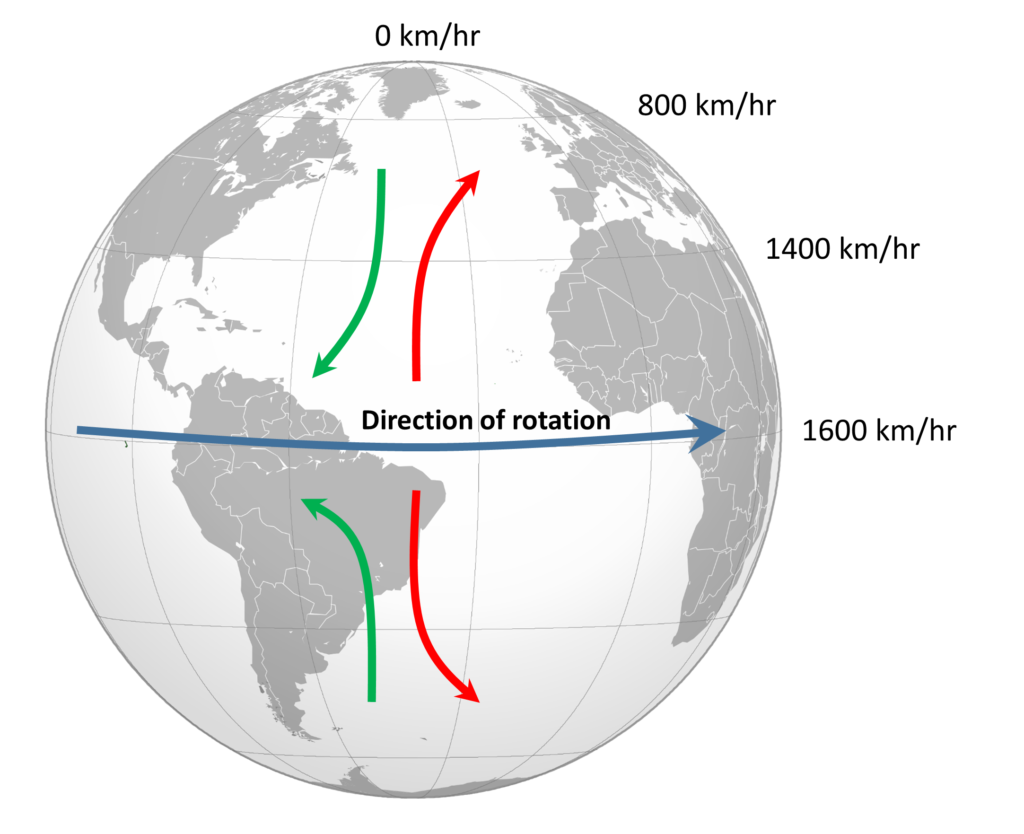What is the Coriolis Effect?
The Coriolis Effect is a phenomenon that arises due to the rotation of the Earth on its axis. As the planet spins, objects moving across its surface experience a deflection to the right in the northern hemisphere and to the left in the southern hemisphere, relative to the direction of motion. This deflection is caused by the Earth’s rotation, which imparts an additional velocity component perpendicular to the motion of the object.
How does the Coriolis Effect impact weather patterns?
The Coriolis Effect plays a significant role in shaping weather patterns around the globe. In the northern hemisphere, for example, the prevailing winds blow from west to east, but they appear to curve to the right as they move towards the equator. This deflection results in the formation of the trade winds, which blow from east to west and are responsible for the dry, arid conditions in regions like the Sahara Desert and the Australian Outback. The Coriolis Effect also influences the formation and movement of tropical cyclones, including hurricanes, typhoons, and cyclones. As warm, moist air rises from the ocean’s surface, it begins to rotate due to the Coriolis Effect, creating a low-pressure system. The rotation of the Earth causes the air to spiral inward, forming a cyclone with high winds and heavy rainfall.
How does the Coriolis Effect impact ocean currents?
Ocean currents are also affected by the Coriolis Effect, which causes them to move in circular paths known as gyres. In the northern hemisphere, ocean currents rotate clockwise around a central point, while in the southern hemisphere, they rotate counterclockwise. These gyres play a vital role in distributing heat and nutrients around the planet and can have a significant impact on regional climate and weather.
How does the Coriolis Effect impact climate?
The Coriolis Effect is a critical factor in understanding global climate patterns. It can help explain the formation of ocean currents, the movement of winds, and the development of tropical cyclones. These factors, in turn, impact the global climate system, which is affected by changes in temperature, precipitation, and atmospheric pressure.

How is the Coriolis Effect studied and measured?
The Coriolis Effect is studied and measured through various scientific methods, including satellite observations, computer models, and in-situ measurements. Scientists use data from these sources to model and predict future changes in the Earth’s climate system. By understanding how the Coriolis Effect works, researchers can gain a better understanding of the complex interactions that drive weather and climate patterns across the globe.
The Coriolis Effect is a phenomenon that plays a critical role in shaping weather patterns, ocean currents, and global climate. By understanding how it works and measuring its impact, scientists can better predict future changes in the Earth’s climate system, helping us prepare for the challenges ahead.
READ MORE: Other “Solar System” with 7 Earth-Like Planets was Found by NASA


